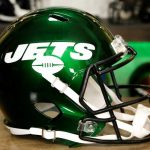“We certainly want it”: Utah Hockey are in early-stage negotiations of confirming capture of stunning Forward, they think he’s Perfect
The Utah Hockey team is currently in early-stage negotiations to secure a stunning forward, and they believe he could be the perfect addition to their lineup. Gabriel Vilardi, who has shown exceptional growth over the past few seasons, is the player they are targeting.

Vilardi, who played for the Winnipeg Jets during the 2023-24 season, had a notable performance, participating in 47 games where he scored 22 goals and registered 14 assists, bringing his total points to 36. His consistent offensive output helped to solidify his reputation as a valuable contributor to the Jets’ attack.
This season, Vilardi has continued to demonstrate significant progress in his game, showing marked improvement in both his scoring ability and overall performance. He is currently on track to surpass his previous career highs in both goals and points, highlighting his growing confidence and skill development. His ability to score and contribute offensively has caught the attention of teams around the league, with Utah Hockey recognizing his potential to make a major impact.
While the negotiations are still in the early stages, Utah Hockey’s interest in Vilardi is clear. The team views him as a perfect fit for their system, believing that his talent, work ethic, and potential for further growth could make him a game-changing presence on their roster. If the deal comes to fruition, Vilardi’s addition could provide a much-needed boost to the team’s forward corps, giving them a dynamic and skilled player who can contribute in all situations.
As the talks continue, all eyes will be on whether Utah Hockey can successfully land the talented forward and what impact his presence could have on the team’s performance in the coming seasons.
Please share this article if you like it!



No Comment! Be the first one.